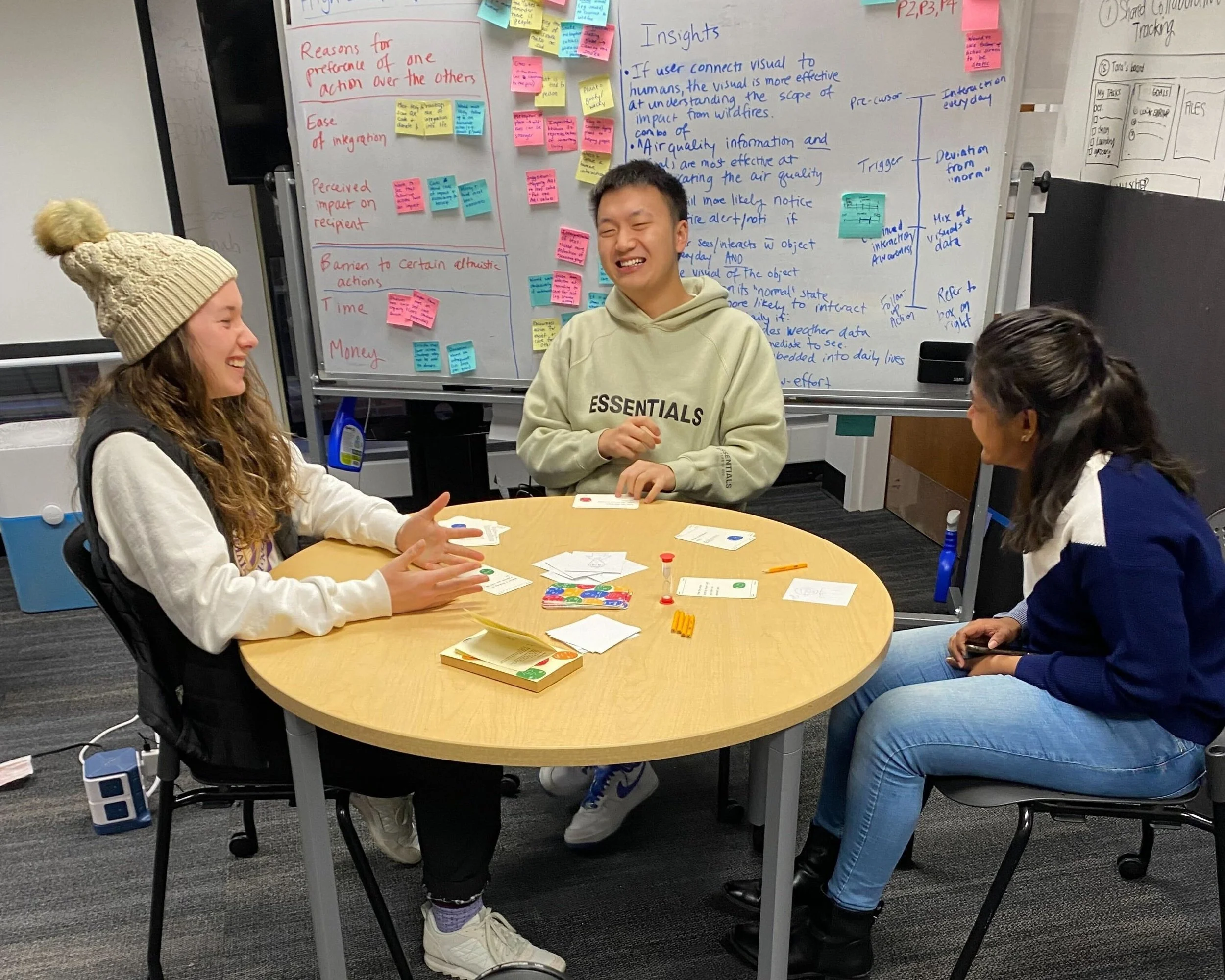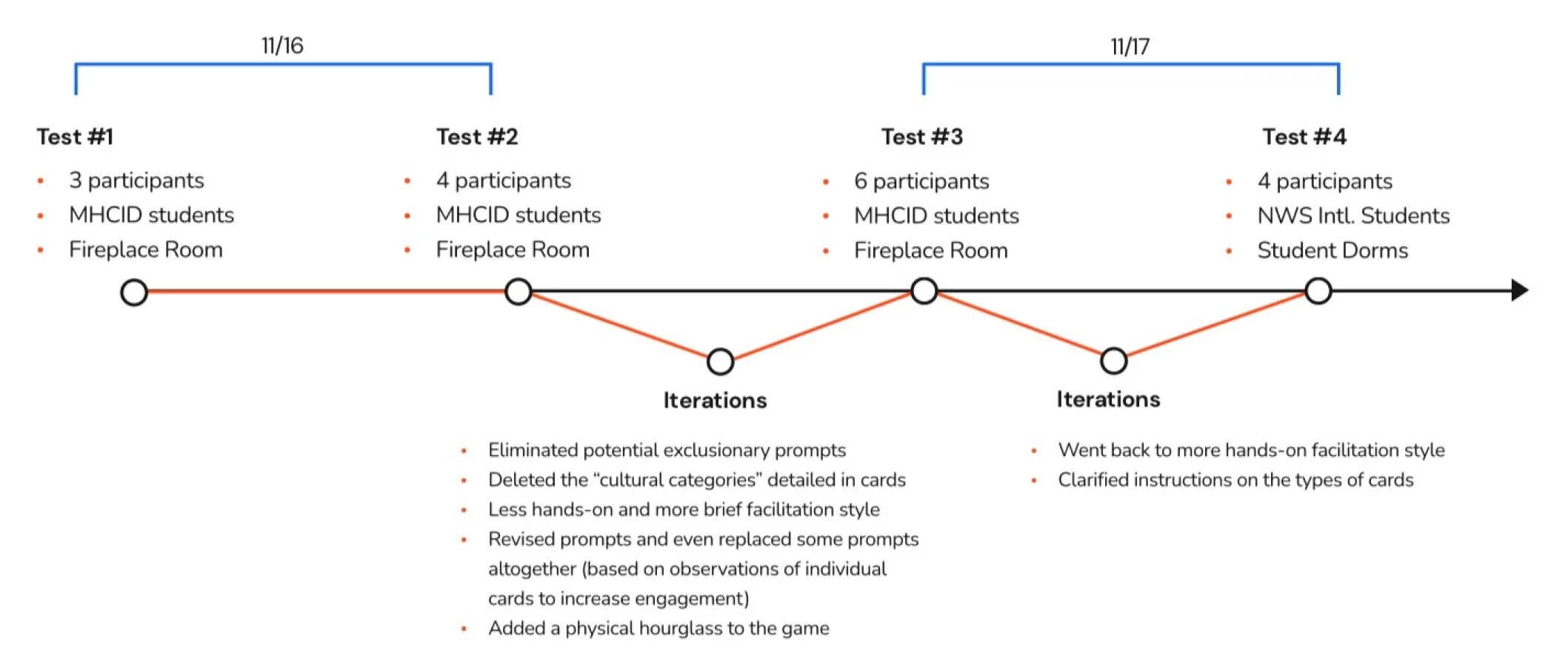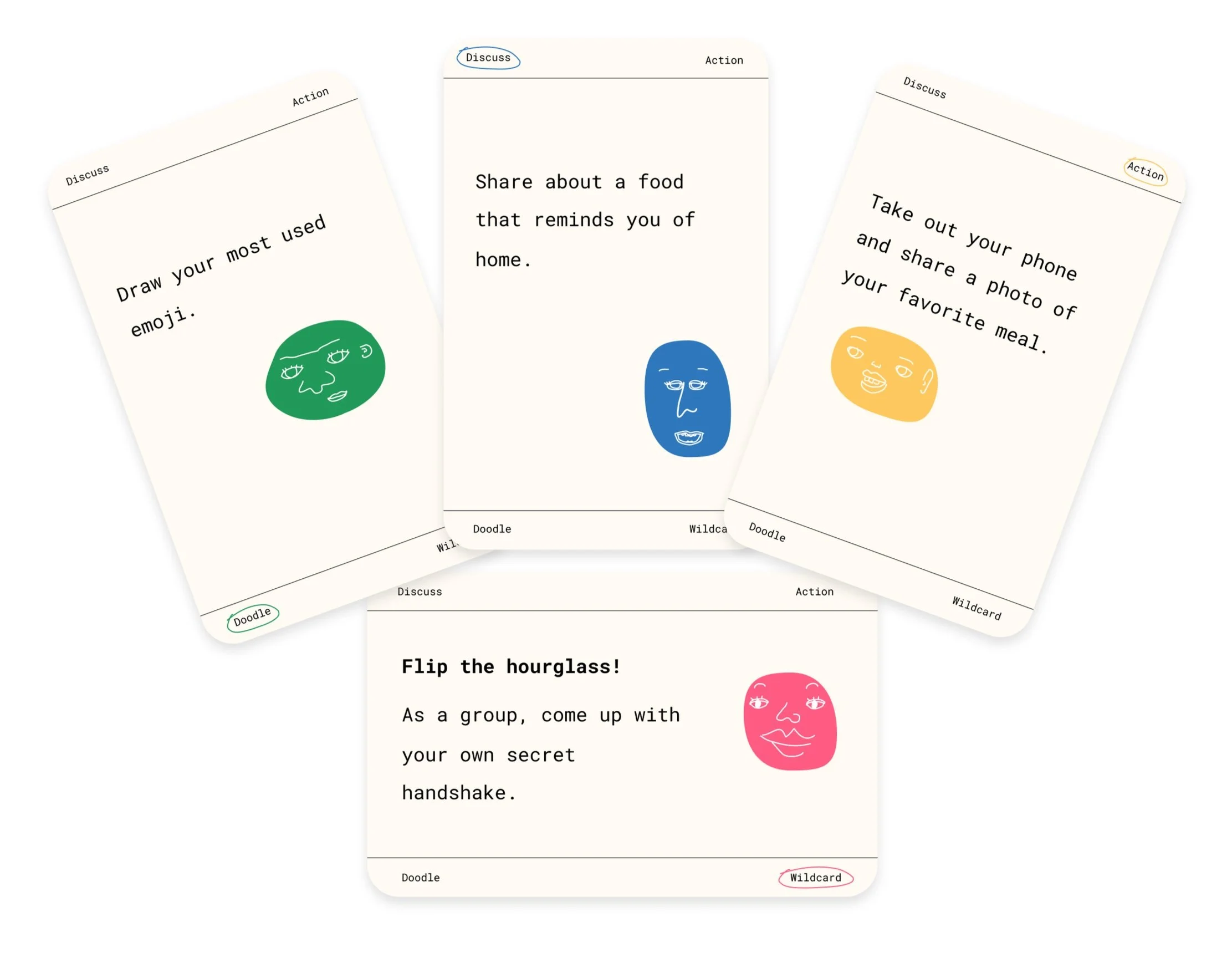
‘About: Us’ Prompt Card Game
After identifying a social divide between international and domestic high school students at The Northwest School in Seattle, our team aimed to bridge this gap through a prompt card game that balances fun, lighthearted prompts with opportunities for deeper connection. The prompt card game is designed to be played in class to deepen connection and strengthen cultural understanding between domestic and international students.
Impact: The success of About: Us has led to a launch of the game at The Northwest School at the start of the 2023-2024 school year and the potential for it to become a business venture that supports international high schools worldwide.
Organization
The Northwest School
Project Duration
9 months
Team
MHCI+D Grad students
Role
UX/UI Designer, Design Research
Context
The project began during Ideation Studio within the MHCI+D masters program.
Our initial focus was on exploring immigrant student experiences in the United States. Throughout our research, we discovered numerous challenges that immigrant and international students encounter during their acculturation process. These difficulties encompass adjusting to a new country, cultural assimilation pressures, and dealing with stereotypes and hostility directed towards international students.
Assumptions
Afterwards, we narrowed our focus on a single high school in Seattle with a sizable international student population called the Northwest School (NWS). We approached the NWS to work on the health of their student population.
Initially, we anticipated encountering issues such as stereotypes and bullying of international students based on our secondary research. However, as we began engaging with stakeholders at the school, we discovered that international students were actually grappling with a distinct set of challenges.
Picture of the Northwest School campus in Seattle’s Capitol Hill neighborhood.
Research
Research Questions
1. What are the needs and challenges of immigrant students at the NWS?
2. How is NWS supporting immigrant students?
Recruiting Strategy
We focused on talking to multiple stakeholders at the Northwest School to get a holistic perspective of the international student experience at the NWS.
At this point, we realized that it would be better to approach this project by seeking to support experts who are already working to support international students at the school, and shaped our research questions accordingly.
I interviewed two stakeholders during the research process: the Director of Boarding School and the Student Resident Advisors.
Discoveries
❌ Existing NWS support structures for integrating int’l students are ad hoc and don’t take a long-term approach
🏀 Shared interests and activities play a key role in facilitating connections between int’l and domestic students
🌎 Int’l students feel culturally underrepresented and struggle to socialize due to cultural differences
😕 Int’l students experience the burden of reaching out to domestic students, without equal reciprocation
A picture of the student dining area during lunch.
Me interviewing the Director of Boarding School at the student dormitories.
The Challenge
How might we help The Northwest School integrate domestic & international students through meaningful interactions that build connection & cultural understanding?
Design Outcomes
Design
Principles
We wanted a solution that
✅ Is engaging
✅ Facilitates meaningful conversation
✅ Allows for cultural sharing.
We wanted to avoid
🚫 Making students uncomfortable
🚫 Enabling student bullying
🚫 Employing cultural stereotypes
-
A solution will excite students and inspire curiosity, easing social barriers and enabling students to enthusiastically engage with each other.
-
A solution will leverage cultural diversity as a way to foster empathy and mutual respect to create meaningful connections between international and domestic students.
-
A solution will empower the NWS to create lasting structures and take a long-term view of the complexities of integrating domestic and international students.
-
A solution will support international and domestic students to develop a shared sense of belonging and identity within the NWS.
Ideation + Storyboarding
After ideating over 100 potential solutions, we downselected using a Pugh Matrix that included criteria derived from our design principles:
1. Design Challenge Relevance: How relevant is this solution candidate to our design challenge?
2. Design Principles Intersect: Does this solution candidate align with all four of our design principles?
3. Feasibility: How feasible is this solution candidate given our team’s skillset, timeline, and financial resources?
After down-selecting to three ideas, we proceeded to create storyboards for each of them. This approach allowed us to gain a more comprehensive insight into the potential execution and impact of each solution.
However, after extensive internal deliberation, we ultimately opted for a completely different solution as the best path forward.
A whiteboard featuring storyboards of our final three ideas.
Me filling in the Pugh Matrix.
Ideation
RITE
Prototyping
Using the Role, Look, and Feel Framework
We ultimately decided that the most impactful solution that met our design principles would be an icebreaker card game since it was flexible, easy to implement, and fun. Therefore, we began prototyping the game.
Using RITE prototyping (Rapid, Iterative, Testing and Experimentation), we explored:
📝 The wording and types of prompts
📊 Different group sizes
💬 Ways of explaining the game to players
Our first iteration prototype made out of paper glued onto a construction paper backing.
Our final iteration prototype made of cardstock, featuring an instruction manual, 30 prompt cards, and a box for the cards.
Visual Design Direction
Final Card Designs
Final Material Designs
Moodboard
As the lead designer on the team, I curated images for this moodboard with feedback from my teammates. I selected images for moodboard to convey feelings of playfulness, intrigue, and authenticity. The colors are centered around primary colors and illustrations include simple doodles and drawings that are relatively abstract and feature faces.
Overall there is a modern, art-forward look that is minimalistic yet eye-catching.
Impact
Stakeholder Buy-in
We presented the solution and our accompanying research and methodology to the Northwest school. School stakeholders, including the Head of School and the DEI team, were impressed with our work.
We produced the cards and have supplied the school with decks that they have introduced into their start of school orientation as well as advisory periods.
A group of NWS students playing the final design of the game.













